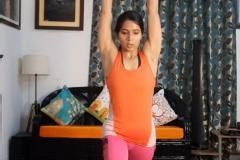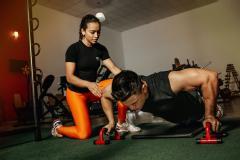-
Types of Dance Styles:
- Ballet: A classical dance style characterized by graceful and precise movements.
- Jazz: A high-energy dance form with elements of syncopation and improvisation.
- Contemporary: A modern dance style that combines elements of ballet and other techniques with an emphasis on self-expression.
- Hip-Hop: A street dance style with a focus on urban culture and dynamic, often acrobatic movements.
- Tap: A dance form in which dancers use their feet to create rhythmic sounds by tapping on the floor.
- Ballroom: A partner dance style that includes dances like the waltz, foxtrot, tango, and more.
- Salsa: A lively Latin dance style characterized by quick footwork and hip movements.
- Modern Dance: A style that emphasizes emotional expression and freedom of movement.
-
Basic Dance Techniques:
- Posture: Maintaining good posture is crucial for balance and movement control.
- Alignment: Proper alignment of the body is essential to prevent injury and execute movements correctly.
- Coordination: Dancing often involves intricate footwork and arm movements that require coordination.
- Rhythm: Understanding and following the beat of the music is fundamental in dance.
- Flexibility: Stretching and flexibility exercises help dancers achieve a wide range of motion.
- Balance: Developing balance is crucial for executing moves gracefully.
-
Choreography: Many dances are organized into sequences or routines known as choreography. Choreographers design these sequences, and dancers learn and perform them.
-
Costumes and Attire: Dancers typically wear costumes or dance attire appropriate for the style they are performing. These costumes can enhance the visual appeal of the dance and facilitate movement.
-
Music: Music plays a significant role in dance, setting the tempo and mood for the performance. Dancers often synchronize their movements with the rhythm and melody of the music.
-
Training and Practice: Becoming a proficient dancer requires regular training and practice. Dancers often take classes to refine their skills and improve their technique.
-
Performance: Dancers often perform on stage, in theaters, or at various events. Performing in front of an audience is an integral part of the dance experience.
-
Expressiveness: Dance is a form of self-expression. Dancers use their bodies to convey emotions, stories, and ideas.
-
Cultural and Historical Significance: Different cultures have their own unique dance traditions, which often reflect their history, values, and rituals. Dance has been used for centuries to celebrate, communicate, and express cultural identity.
-
Health Benefits: Dance is not only an art form but also a physical activity that provides numerous health benefits, including improved cardiovascular fitness, strength, flexibility, and mental well-being.
Remember that these are just some basic concepts related to dance. The world of dance is vast and diverse, and there's always more to learn and explore within this art form. Whether you're a beginner or an experienced dancer, dance can be a fulfilling and enriching pursuit.
Fitness training is a structured and systematic approach to improving physical health, strength, endurance, and overall well-being. It involves a variety of exercises, activities, and workouts designed to target different aspects of physical fitness. Here are some key aspects of fitness training:
- Components of Physical Fitness: Fitness training typically focuses on developing these key components of physical fitness:
- Cardiovascular Endurance: The ability of the heart and lungs to supply oxygen to the muscles during prolonged physical activity.
- Strength: The capacity of muscles to generate force against resistance.
- Flexibility: The range of motion at a joint or series of joints.
- Muscular Endurance: The ability of muscles to perform repetitive contractions without fatigue.
- Body Composition: The proportion of lean muscle mass to body fat.







